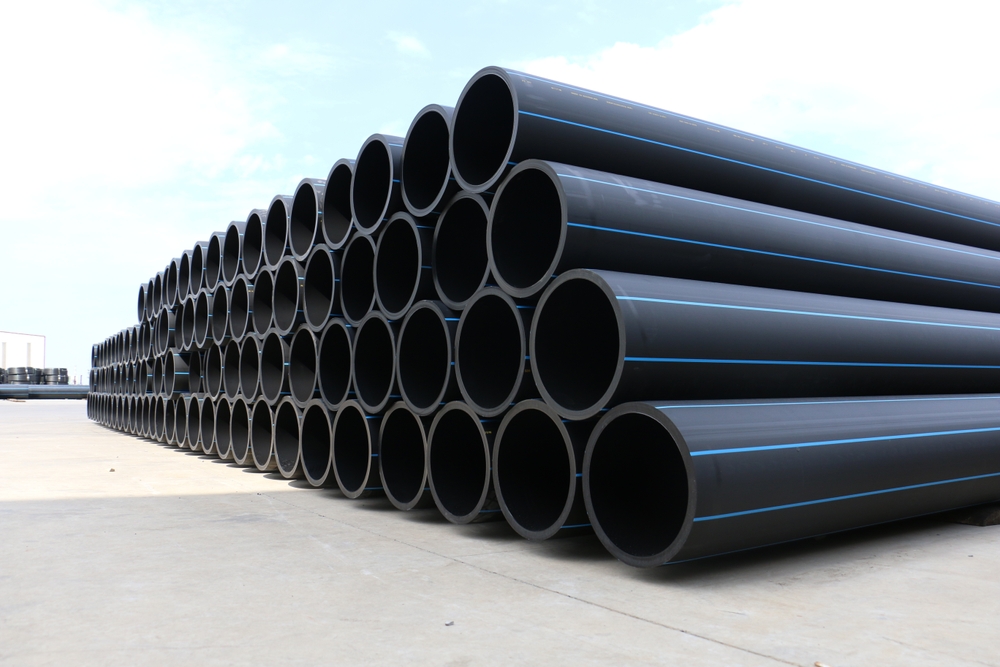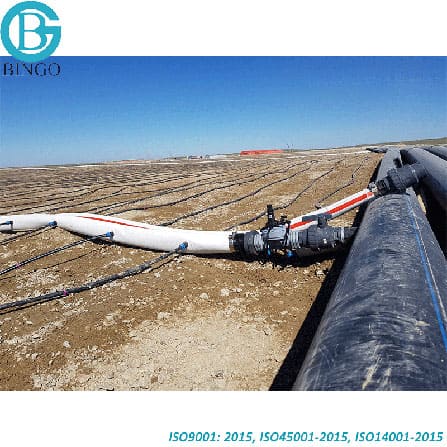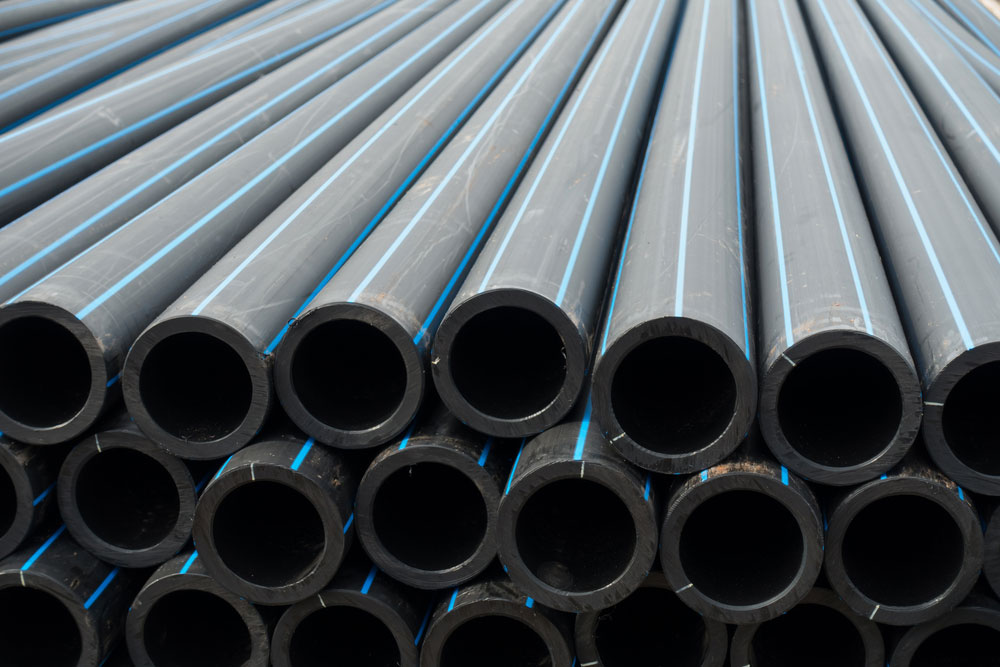How to Use hdpe pipe fittings Midland TX for System Longevity
Wiki Article
Check Out the Production Refine Behind High-Quality HDPE Pipeline and Its Applications
The production process of premium HDPE pipelines is elaborate and methodical. It starts with the option of raw products that improve efficiency. Following this, ethylene undertakes polymerization to form resin, which is after that formed via extrusion. Quality assurance is extremely important, ensuring that the final product satisfies strict requirements. Nonetheless, the trip of HDPE pipelines does not end with manufacturing. Their applications across numerous industries disclose a more comprehensive value worth examining.Understanding HDPE: Qualities and Advantages

High-density polyethylene (HDPE) is a versatile polycarbonate recognized for its resilience and resistance to different environmental variables. This product shows excellent tensile stamina, making it ideal for requiring applications. Its low-density framework adds to a lightweight product, assisting in convenience of handling and installation. HDPE also showcases amazing resistance to chemicals, which decreases degradation when revealed to extreme compounds.
The product's low moisture absorption even more enhances its longevity, making it ideal for usage in pipes and storage tanks. Additionally, HDPE is resistant to ultraviolet (UV) radiation, guaranteeing that items keep their integrity also when revealed to sunlight. Additionally, its versatility permits the creation of intricate shapes without endangering stamina. The environment-friendly nature of HDPE, commonly derived from recycled products, contributes to its allure, promoting sustainable techniques in production. Generally, these residential properties and benefits make HDPE a favored option for numerous industrial and customer applications.
Raw Material Option for HDPE Manufacturing
The option of raw materials for HDPE manufacturing is important to validate the end product meets the preferred specifications and quality criteria. High-density polyethylene (HDPE) is mainly generated from polymerized ethylene, obtained from fossil gas such as gas or petroleum. The high quality of these feedstocks significantly affects the mechanical and thermal residential or commercial properties of the final HDPE.Additives also play a significant duty in improving HDPE's efficiency, consisting of anti-oxidants, UV stabilizers, and colorants, which boost toughness and resistance to ecological variables. The choice procedure should think about not just the chemical composition of the raw materials however also their processing qualities to guarantee efficient production.
The sourcing of raw materials must prioritize sustainability and compliance with environmental guidelines, as accountable techniques are crucial in today's market. Eventually, careful raw product option lays the structure for creating top quality HDPE pipelines suitable for varied applications.
The Extrusion Refine: Forming HDPE Pipe
The extrusion process plays a crucial function fit HDPE pipes, beginning with careful product preparation strategies that guarantee suitable flow and uniformity. Similarly essential is the style of the die, which directly influences the final dimensions and surface area high quality of the pipe. Together, these factors contribute considerably to the effectiveness and quality of HDPE pipe manufacturing.Material Prep Work Methods
Effective manufacturing of HDPE pipes starts with thorough product preparation techniques, especially the extrusion process. Throughout this phase, high-density polyethylene resin is first dried to get rid of dampness, making sure excellent circulation qualities. The resin is after that fed into the extruder, where it undergoes home heating and melting, transforming into a viscous state. This home heating process is meticulously regulated to preserve the product's integrity and efficiency. The liquified HDPE is forced with a die, shaping it right into a continual pipe form. Proper temperature level administration throughout extrusion is important, as it straight influences the material's residential or commercial properties and the end product high quality. Once formed, the HDPE pipeline is cooled down and cut to defined sizes, ready for succeeding handling and applications.Die Design Significance
Accuracy in die layout plays a vital duty in the extrusion process of HDPE pipes. The die offers as the final shaping device, directly affecting the pipeline's measurements, wall surface thickness, and surface area finish. A properly designed die assurances uniform product circulation, reducing problems such as abnormalities and weak spots. The geometry of the die must be optimized to suit the particular buildings of HDPE, including its viscosity and thermal actions during extrusion. Additionally, the cooling price of the material as it goes through the die can substantially influence the pipeline's structural integrity. Spending in sophisticated die technology is essential for suppliers intending to create high-grade HDPE pipelines that satisfy sector standards and customer assumptions.Quality Control Measures in HDPE Production
Although various variables influence the top quality of HDPE pipeline production, effective quality assurance procedures are vital to assure consistency and integrity in the end product. Key quality assurance methods consist of extensive material inspection, validating that the raw polyethylene fulfills recognized criteria for pureness and thickness. During the extrusion procedure, criteria such as temperature level, stress, and cooling time are carefully checked to keep dimensional accuracy and architectural honestyOn top of that, post-production screening is necessary; makers often carry out hydrostatic examinations to evaluate the pipeline's strength and resistance to stress. Aesthetic assessments for surface area problems better boost quality control. Accreditation from appropriate criteria organizations, like ASTM or ISO, provides an extra layer of reputation. By executing these extensive quality assurance actions, suppliers can lessen flaws, improve efficiency, and ensure that the HDPE pipelines fulfill the details demands of different applications, inevitably bring about client complete satisfaction and rely on the item.
Applications of HDPE Pipeline Across Industries
HDPE pipes are used throughout various fields because of their longevity and versatility. In water distribution systems, they assure reliable delivery, while in wastewater monitoring, they provide trustworthy remedies for waste transportation. Furthermore, farming irrigation networks take advantage of HDPE's resistance to corrosion and versatility, making it a suitable option for contemporary farming techniques.
Water Distribution Solutions
A substantial variety of markets depend on high-density polyethylene (HDPE) pipes for efficient water circulation systems. Understood for their sturdiness and resistance to corrosion, HDPE pipelines are commonly made use of in community supply of water networks, agricultural irrigation, and industrial applications. Their lightweight nature helps with very easy handling and installation, decreasing labor prices and time. Furthermore, HDPE pipelines can suit numerous pressure degrees, making them suitable for both reduced and high-pressure systems. Texas hdpe pipe manufacturer. The versatility of the material enables for smooth integration into existing framework, reducing the requirement for substantial excavation. HDPE's resistance to chemical seeping assurances that the water supplied continues to be secure and clean, making it a suitable choice for maintaining the quality of potable water across different industries.Wastewater Administration Solutions
Reliable water circulation systems likewise lead the way for cutting-edge wastewater management solutions, where high-density polyethylene (HDPE) pipes play a substantial function. Distinguished for their durability and resistance to corrosion, HDPE pipes are suitable for transferring wastewater in various settings. Their versatility allows for simple setup in intricate environments, reducing the requirement for extensive excavation. Additionally, HDPE's smooth interior surface area decreases friction, boosting flow rates and efficiency. These pipes are likewise resistant to chemical leaching, making sure that impurities do not endanger the surrounding atmosphere. Industries, municipalities, and treatment centers increasingly rely upon HDPE pipes for their integrity and durability, making them a preferred selection for modern-day wastewater monitoring systems. This flexibility highlights the critical value of HDPE pipelines across many applications.Agricultural Irrigation Networks
Agricultural watering networks benefit substantially from using high-density polyethylene (HDPE) pipes, which give effective and trustworthy water shipment to plants. HDPE pipes are light-weight, making them easy to transport and set up, while their adaptability permits different setups in varied surfaces. These pipes show excellent resistance to deterioration, chemicals, and UV radiation, guaranteeing durability in harsh farming environments. Additionally, their smooth interior surface decreases friction loss, enhancing water flow and minimizing power prices associated with pumping. The longevity of HDPE pipelines, typically exceeding half a century, adds to reduce maintenance and substitute expenditures. Farmers significantly depend on HDPE pipelines to enhance watering performance and promote sustainable farming methods, eventually leading to enhanced crop yields and resource conservation.
Future Trends in HDPE Pipeline Modern Technology
As the demand for sustainable and reliable facilities expands, developments in HDPE pipeline technology are positioned to transform different markets. Arising patterns consist of the assimilation of clever innovations, such as sensing units and IoT abilities, which assist in real-time monitoring of pipe conditions, lowering maintenance prices and avoiding leakages. Additionally, the development of sophisticated manufacturing methods, such as 3D printing, is allowing the manufacturing of complicated, customized pipeline layouts that cater to particular task needs.The focus on recycling and round economic climate methods is driving the development of HDPE pipelines made from recycled materials, boosting sustainability. Enhanced jointing methods, such as electro-fusion and mechanical installations, are also boosting installation efficiency and integrity. The growing focus on ecological regulations is pressing producers to embrace greener manufacturing processes, making sure that HDPE pipes not just meet sector requirements however likewise foster a more sustainable future for framework development.
Regularly Asked Questions
Just How Does HDPE Contrast to Other Plastic Materials?
HDPE surpasses numerous various other plastic materials relating to sturdiness, chemical resistance, and versatility. Its low thickness and high tensile strength make it excellent for various applications, commonly surpassing choices in both efficiency and long life.What Are the Ecological Impacts of HDPE Manufacturing?
The environmental impacts of HDPE manufacturing consist of greenhouse gas emissions, energy intake, and possible air pollution from manufacturing processes. Furthermore, inappropriate disposal can lead to dirt and water contamination, increasing worries regarding long-term eco-friendly effects.Can HDPE Pipes Be Recycled?
Yes, HDPE pipelines can be recycled. Lots of centers accept used HDPE for check here handling, transforming it into brand-new products. This reusing contributes to sustainability initiatives, minimizing plastic waste while saving resources and power in the manufacturing cycle.What Is the Life-span of HDPE Pipeline?

How Do Temperature Level Variations Impact HDPE Pipe Efficiency?
Temperature variations substantially influence HDPE pipeline performance, impacting versatility and strength. Heats can result in softening, while reduced temperature levels may trigger brittleness, ultimately affecting the pipeline's sturdiness and viability for various applications in varied environments.Report this wiki page